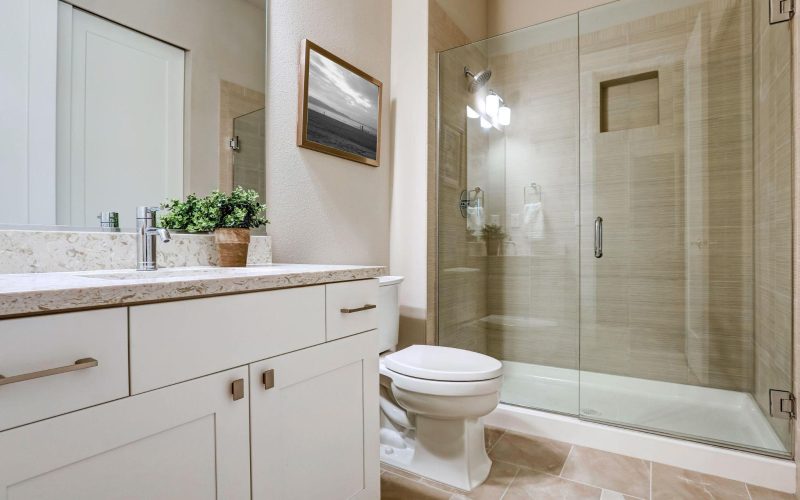Turning your garage into a functional workshop is a rewarding project that combines practicality with creativity. Here, we’ll guide you through the essential design tips to create an efficient, organized, and inspiring workspace.
Assess Your Space and Needs
Before diving into the transformation, assess your garage space and identify your specific needs. Measure the dimensions to understand what you can fit comfortably. Think about the projects you plan to undertake and the tools you’ll need. This step is crucial to ensure you maximize the available space while keeping it functional.
Plan the Layout
An effective layout is the backbone of a well-designed workshop. Consider a work triangle concept, similar to a kitchen, where your most-used tools and materials are within easy reach. Create distinct zones for different activities such as woodworking, metalworking, or electronics. This zoning helps maintain order and improves workflow.
Maximize Storage Solutions
Storage is key in any garage workshop. Utilize vertical space with pegboards, shelving units, and wall-mounted cabinets. Clear bins and labeled drawers can keep small items organized and easily accessible.
A rolling tool cart is handy for keeping essential tools mobile and within reach during projects. Don’t forget to use the ceiling space for hanging larger tools or bikes, which can free up floor space.
Ensure Adequate Lighting
Good lighting is essential for precision and safety. Combine natural light with task lighting. Install bright, energy-efficient LED lights overhead and use adjustable task lights for detailed work. Consider under-cabinet lighting for workbenches to minimize shadows. If natural light is limited, adding more windows or skylights can make a significant difference.
Electrical Outlets and Power Sources
Evaluate your power needs and install sufficient electrical outlets. Ensure that they are accessible and strategically placed to avoid the need for excessive extension cords. Consider adding a dedicated circuit for power-hungry tools to prevent overloading. It’s also wise to have surge protectors to safeguard your tools and electronics.
Ventilation and Climate Control
Proper ventilation is crucial, especially if you work with fumes, dust, or solvents. Install exhaust fans or a ventilation system to keep the air clean. For year-round comfort, consider heating options for winter and cooling solutions for summer, such as portable heaters, fans, or even a mini-split HVAC system.
Proper insulation can also help maintain a comfortable temperature and reduce energy costs.
Durable Work Surfaces
Invest in sturdy, durable workbenches. Choose surfaces that can withstand heavy use, such as solid wood or steel. Ensure they are at a comfortable working height. Adding a movable workbench with locking wheels can provide flexibility for different tasks. Consider having multiple work surfaces dedicated to specific tasks to keep your workflow smooth.
Flooring Considerations
Garage floors can be cold and hard. Consider adding rubber mats or epoxy coatings for comfort and durability. These options also make cleaning easier and improve the overall aesthetic of your workshop. Anti-fatigue mats can also be a great addition, especially if you spend long hours standing.
Safety First
Safety should always be a priority. Equip your workshop with a first aid kit, fire extinguisher, and smoke detector. Keep safety gear such as goggles, gloves, and ear protection readily available. Ensure proper storage of hazardous materials and tools to prevent accidents. Install proper lighting and clear markings for emergency exits and pathways.
Personalize Your Space
Finally, make the space your own. Add personal touches like a bulletin board for inspiration, a sound system for music, or even a small refrigerator for refreshments. A well-designed workshop should be both functional and enjoyable, reflecting your personality and style. Customizing your space can boost your motivation and creativity.
Practical Tips for Workshop Organization
- Label Everything: Clearly labeled storage bins and tool racks save time and reduce frustration.
- Clean as You Go: Maintaining a clean workspace improves safety and efficiency.
- Regular Maintenance: Keep your tools in good condition with regular maintenance and proper storage.
Budgeting and Sourcing Materials
Budgeting is a critical aspect of setting up your workshop. Start with essential tools and gradually build up your collection. Look for sales, second-hand tools, and DIY storage solutions to keep costs down. Many hardware stores offer loyalty programs that can provide discounts on frequent purchases.
Eco-Friendly Considerations
Consider the environmental impact of your workshop. Use energy-efficient lighting and appliances. Recycle and repurpose materials where possible. Implementing eco-friendly practices not only benefits the environment but can also reduce long-term costs.
Engaging in Community and Continuing Education
Join local maker groups or online communities to exchange ideas and learn new techniques. Attending workshops or courses can enhance your skills and introduce you to innovative tools and methods. Staying engaged with a community can provide support and inspiration for your projects.
Conclusion
Creating a garage workshop is a project that pays off in functionality and personal satisfaction. By assessing your needs, planning an efficient layout, maximizing storage, ensuring proper lighting and ventilation, and prioritizing safety, you can transform your garage into a productive and enjoyable workspace.
Personalize it to reflect your style, and you’ll find it becomes a place where creativity and craftsmanship thrive. Whether you’re a hobbyist or a professional, a well-designed workshop will serve as a cornerstone for countless projects and innovations.











